Advertiser content
Farm data: confidence to make the best decisions
Provided by
AgriWebb's livestock management software for beef and sheep farms helps you manage everything that matters to your business’s success. Record keeping, big-picture insights, team productivity tools, compliance and assurance reports and digital farm maps, all come together in one place. 16,000 global producers entrust AgriWebb to steward more than 22 million animals across 136 million acres of land, and we also welcome hundreds more new users every month.
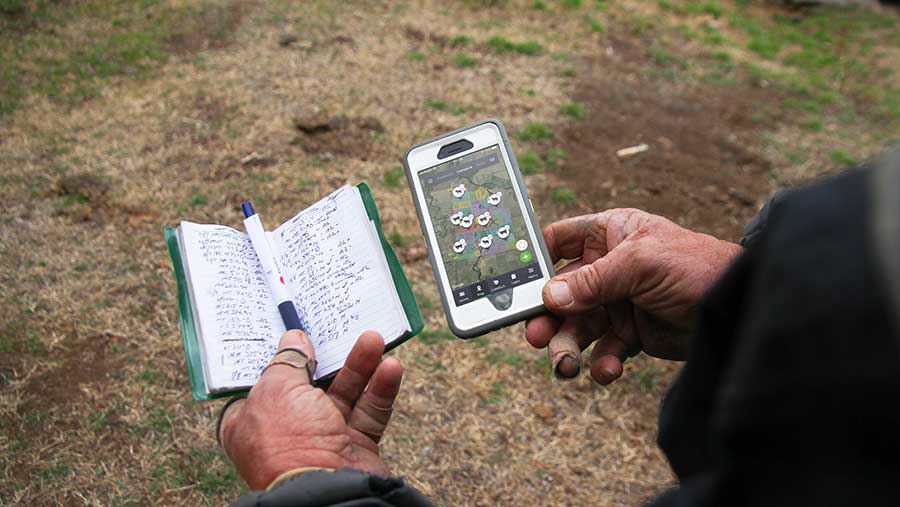 © Agriwebb
© Agriwebb Focusing on performance and profitability are key to livestock farming success. It makes sense. After all, the more information we have, the better the chances of making the best decision.
This is exactly the approach farm manager and AgriWebb customer Lawrence Martin took when assessing his flock.
“Every single animal needs to perform at its highest. And we need to ensure that the animals that we keep are doing just that”.
Therefore, using that mindset, 150 out of 350 ewes were culled as they were not productive.
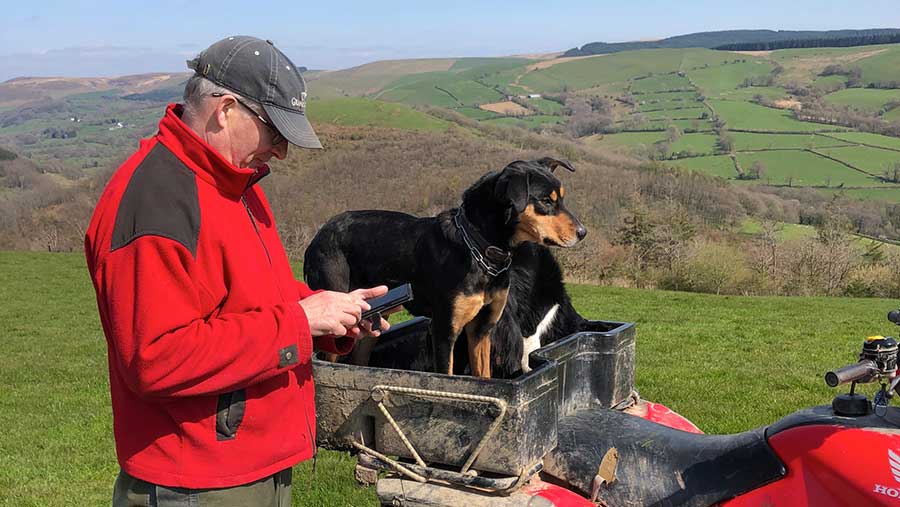
Lawrence Martin © Agriwebb
Lawrence identified they were not positively contributing to the profitability or the future of the farm and took the difficult decision to lose 42% of their flock.
But making confident decisions about culling with the aim of greater productivity in the long run for your herd or flock is based on understanding their performance metrics.
This is exactly what AgriWebb offers: objective data and insights to show you what is working for your system and, most importantly, your finances.
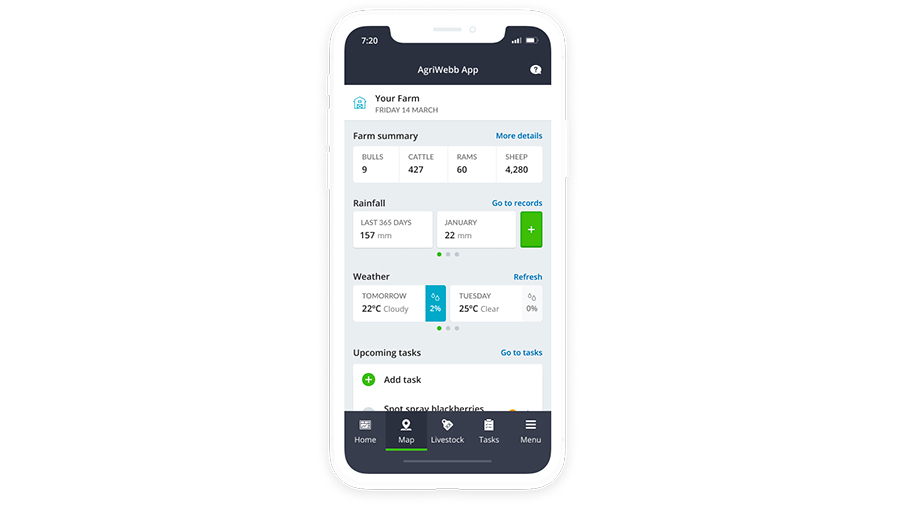
© Agriwebb
How did Lawrence recognise the unproductive animals in his flock?
He set KPIs (Key Performance Indicators) for his livestock around productivity, collected data and analysed what was happening.
The KPIs you want to record and track will depend on your goals for your property. What area of the farm business are you hoping to improve? What measurements are needed to monitor the physical or financial performance?
Below are some examples of KPIs that could be a guide to success on your farm.
Goal: Improve your grazing strategy
Well-managed grass is the cheapest feed for livestock, and increasing grass grown and utilised correlates with increased profitability.
While improved grassland in most of the UK can produce over 12t DM/ha, the current average is closer to 7t DM/ha. You can increase output by reseeding, rotational grazing, or a combination of both.
KPIs to track include:
- Grass grown (tonnes of dry matter per ha)
- Stocking rate per ha (livestock units)
- Daily liveweight gain across the grazing season (kg/day)
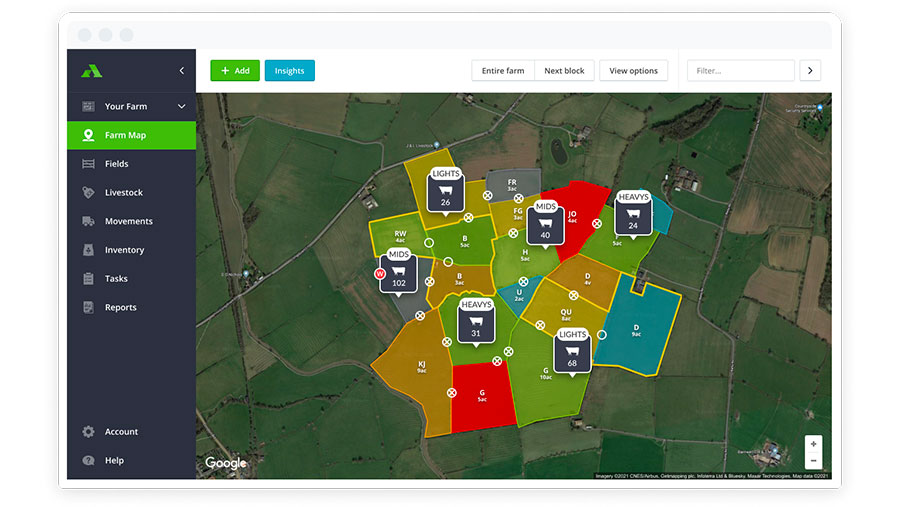
© Agriwebb
Goal: Improve productivity
Fertility measures provide a straightforward indicator of productivity as, without fertility, you don’t have a business.
Many of AHDB’s KPIs for suckler herds and KPIs for the lamb sector, such as ‘age at first calving’ and ‘lamb losses from scanning to reared’, relate to fertility.
These KPIs help you identify if there’s a problem with fertility. Still, the damage has already been done when the numbers are tallied. One KPI to monitor throughout the season is your animals’ Body Condition Score (BCS).
In both cattle and sheep, there is a clear correlation between optimum BCS and positive fertility incomes. By monitoring BCS regularly, you can address shortcomings as they arise.
Therefore, you might want to track your stock’s BCS now and put in place goal KPIs for pre-tupping time, for example.
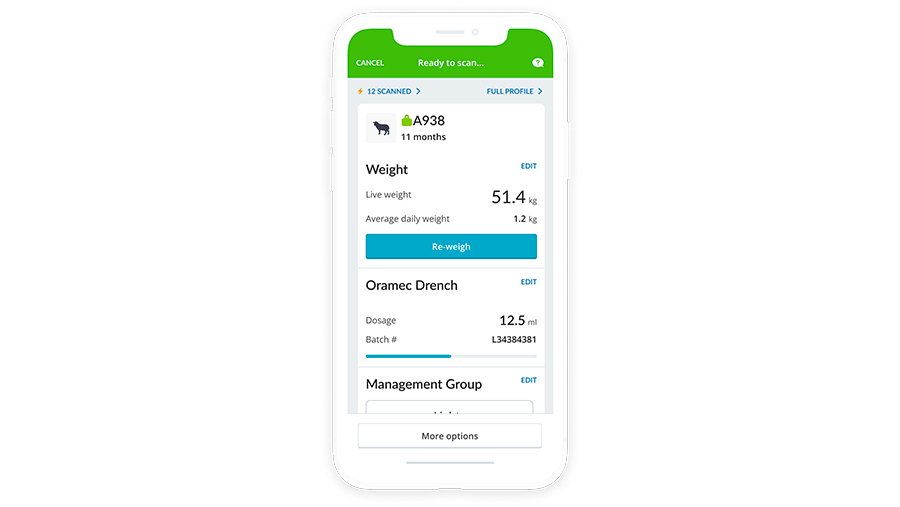
© Agriwebb
KPIs to track include:
- Body Condition Score
- Progeny of ewes and cows (how many / rate or mortality)
- Time to finishing
Goal: Improve animal welfare
Health and welfare KPIs can include a measure of mortality rates or how much medicine is used producing each kg of beef. High medicine use can indicate problems with disease as a result of poor welfare.
Tracking the incidence of lameness and monitoring BCS will also indicate the general health of animals. Improving livestock health outcomes will contribute to a productive herd and a more efficient enterprise.
KPIs to track might include:
- Amount of antibiotics used
- Type of food served (grass or herbal mix, etc.)
- Days on pasture
How could a Livestock Management Software help me?
AgriWebb is one such example of a livestock management software. If you want to know more about such tools and how to effectively measure KPIs, try the buyer’s guide or fill in the form to sign up for a free trial.
“The confidence [to make hard decisions] is exactly what AgriWebb gives you. It’s not just an instinct or a feeling. It tells you that this animal is not right for our system” – Lawrence Martin.
